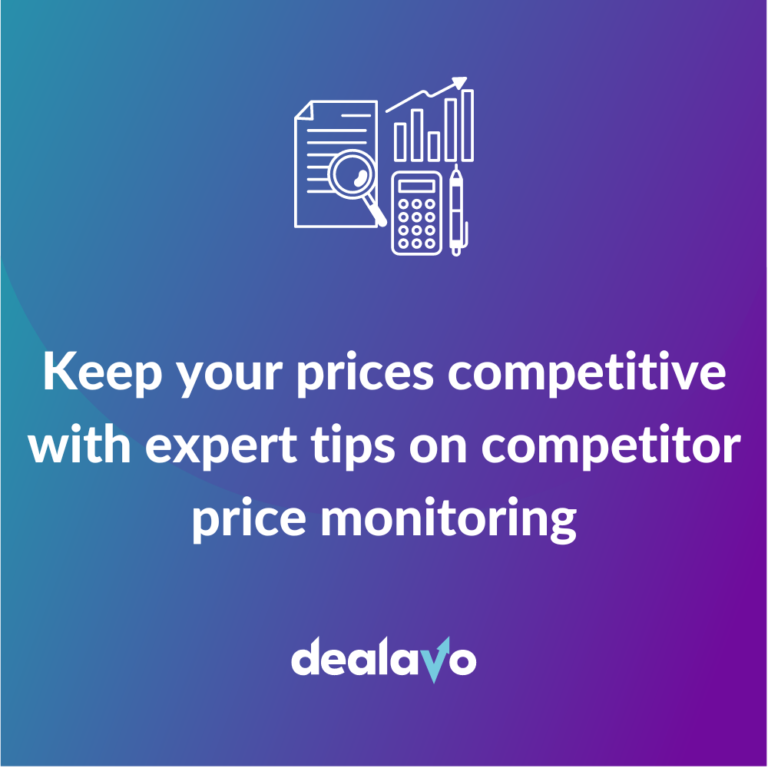Getting the e-commerce pricing right for startups: 7 factors to consider in your pricing strategy
- 30 April 2023
Pricing is one of the most critical success factors for any e-commerce business, especially for startups. As a retailer with your new online shop, you want to get it just right from the start — setting prices that drive customers to buy yet remain profitable and sustainable in the long run. In this blog post, we will look at seven key elements you should consider when crafting an ideal pricing strategy tailored to meet the needs and demands of your particular e-commerce startup. We’ll discuss how to develop a pricing structure that offers value while staying competitive in an increasingly crowded marketplace. With this information, you can make informed decisions as you set prices for products so you can maximize sales and profits quickly.
Include costs in e-commerce pricing
The product price must cover all costs associated with its manufacture, purchase, and sale. This includes not only direct costs such as material and labor costs but also indirect costs such as packaging material, transport costs, and possibly even storage costs. Marketing and advertising costs must also be factored into the price.
It is important that the price is high enough to generate profit, stabilize the company in the long term, and allow you to grow. However, the price must not be too high either, otherwise, it can deter customers and drive them to competitors. Over-pricing can also cause the product to sell poorly and ultimately make less profit.
Pricing is therefore a balancing act and requires careful analysis of all costs and factors affecting price. It is important to regularly review and adjust the price to ensure it reflects current market conditions and brings profit to the company.
Competition in online trade as a basis for the pricing strategy
In order to be successful in e-commerce, it is important to keep an eye on the competitors’ prices and to use them as a guide when optimizing prices. In highly competitive markets, it can make sense to price a little lower to stand out from the competition and attract more consumers. However, you should always make sure that the price is not below your own costs, otherwise, no profit can be made.
There are various tools that make it possible to automatically monitor and compare the prices of the competition, such as the Dealavo price monitoring tool. With our app, you can monitor the prices of your competitors in real-time and thus get an overview of the price development on the market. This allows you to react quickly and, if necessary, adjust your own prices to remain competitive.
Sounds interesting? Try our 7-day demo.
Demand for a product helps it stay competitive
Demand for a product is an important factor that influences pricing. When demand for a product is high, you can price it a little higher because customers are willing to pay a higher price. However, you should also make sure that the price remains fair compared to similar products in the competition. If the price is too high, customers could switch to competitors that offer a cheaper price.
There are different ways to analyze the demand for a product. One possibility is the implementation of market research studies in which the opinion and purchasing behavior of potential customers are asked. The analysis of sales figures and search queries on online platforms can also provide information about demand. Also, if you’re monitoring the prices of your competitors and you see that the prices in your niche are increasing, this can be an indication that the demand is also higher. If they fall steadily, you can usually expect lower demand.
What brand do you offer as a retailer and how well-established is it?
A company’s brand can play an important role in pricing. A well-known and established brand often enjoys a good reputation and is seen by many customers as synonymous with quality and trustworthiness. In such cases, it may make sense to charge higher prices since customers are willing to pay a higher price for the brand.
However, it is important to note that a well-known brand alone is no guarantee of success. Even an established brand has to prove itself over and over again and also prove its quality in order to maintain its good reputation. A brand that is unable to deliver on its promises or deliver its products will quickly lose credibility and, as a result, its appeal to customers.
It is therefore important that the brand and the products or services offered are compatible and of high quality. This is the only way to ensure that the brand retains its value and that customers are willing to pay a higher price. It is therefore worth investing in the brand and the quality of the products or services offered. Of course, you should also make sure that the price remains fair compared to similar offers in the competition and is not too high, so as not to scare off customers.
Product quality and price management for online retailers
The quality of a product or service is an important factor that affects pricing. Customers are usually willing to pay a higher price for high-quality products as they expect better quality and durability. In order to judge the quality of a product, it can be helpful to read customer ratings and test reports and to seek advice from experts. Also, using quality materials and conducting quality control can help ensure the product is of high quality.
Include additional services in your pricing strategies when selling
Additional services such as customer service or guarantees can play an important role in pricing. These services can help customers choose the product or service being offered and be willing to pay a higher price.
Customer service that responds quickly and reliably to customer inquiries and problems can help make them feel valued and well cared for. A guarantee can help customers see the product as a safe and long-term investment. It is important to find a good balance between the services offered and the price in order to convince customers while making a profit.
Customer needs and dynamic pricing: dynamic pricing for your online shop
Customer needs are an important factor in pricing an online store. One way to incorporate customer needs into pricing is to use dynamic pricing. With dynamic pricing, prices are adjusted based on demand and supply. This way you can ensure that the price is always reasonable and meets customer expectations.
Dynamic pricing can be controlled through various tools such as the Dealavo dynamic pricing tool which will analyze the price development in the market and let you adjust the price accordingly. In this way, you can ensure that the price always remains competitive and meets customer expectations.
Conclusion: The right price is the key to a competitive shop
So, to develop the right pricing policy for your ecommerce startup, consider these seven factors. A well-thought-out pricing strategy can help you reach your target audience and increase your sales. So it’s worth investing time and effort in pricing.





